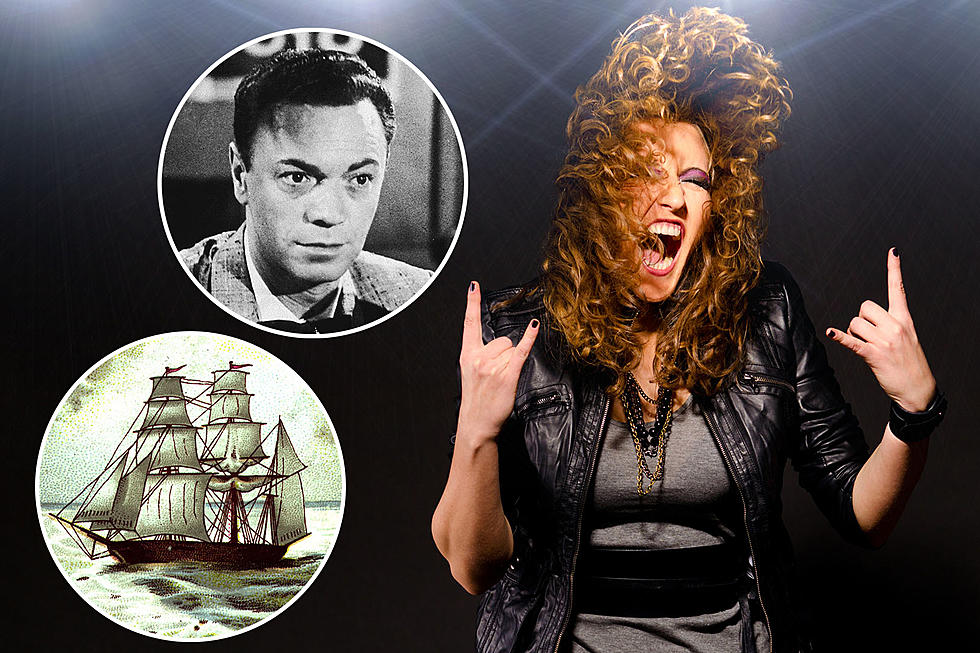
Why Is Rock Music Called ‘Rock’?
Why is rock music called rock?
Our writers, our readers and all of the fans you see at the concerts you go to all have at least one thing in common — we're all fans of rock music. "Rock" is short for rock 'n' roll, which was a genre that was derived from the rhythm and blues and country artists of the decades prior. Rock 'n' roll first became popular in the U.S. in the late 1940s and early 1950s.
"Rock" on its own is probably one of the most commonly-used terms in our vocabulary, but do you ever wonder how the genre got its name in the first place? We've studied the origins of many subgenres, but the name "rock" as a general category seems to be often overlooked.
So, where did the term "rock 'n' roll" come from?
Where Did the Term "Rock 'n' Roll" Originate?
As we already stated, "rock" is short for rock 'n' roll. The genre's name came from the phrase "rocking and rolling," which, according to BBC, was first used by sailors in the 17th century to describe the movement of a ship on the ocean.
Of course, several hundred years later, the phrase "rocking and rolling" became a reference for dancing, and for sex. BBC cited American blues singer Trixie Smith's 1922 song "My Man Rocks Me (With One Steady Roll)" as an example of a song that uses the phrase as a metaphor for both sex and dancing.
The lyrics of the chorus are as follows [via Genius], "My man rocks me with onе steady roll / There's no slippin' whеn he once takes hold / I looked at the clock and the clock struck six / I said 'Daddy, you know lots of tricks' / Oh, he was rockin' me with one steady roll."
How Did 'Rock 'n' Roll' Become the Name of a Music Genre?
An early instance where "rock and roll" was used to describe music was when Billboard Magazine praised Sister Rosetta Tharpe's 1938 track "Rock Me" in a 1942 review, writing, "It’s Sister Rosetta Tharpe for the Rock-and-Roll Spiritual Singing," as noted by Produce Like a Pro. However, it didn't become a more widely-used term until the following decade.
In the 1950s, music was still segregated for black and white audiences. Alan Freed, who hosted a radio show on WJW in Cleveland, Ohio, is credited as having been the first DJ to introduce rhythm and blues music to a white audience, calling it "rock and roll" in the meantime [via Time].
“Rock ’n roll is really swing with a modern name,” Freed once said [via Ultimate Classic Rock]. “It began on the levees and plantations, took in folk songs, and features blues and rhythm. It’s the rhythm that gets to the kids – they’re starved of music they can dance to, after all those years of crooners.”
Freed helped organize a musical event that became known as the Moondog Coronation Ball in Cleveland in 1952, which is now regarded by many as the first-ever rock 'n' roll concert. Paul Williams and the Hucklebuckers and Tiny Grimes and the Rocking Highlanders were chosen as the headliners for the event, which was actually advertised as a dance, according to History.
READ MORE: Why Is Metal Music Called 'Metal'?
There was apparently only a capacity of 10,000 at the venue, and an estimated 20,000 plus people showed up and stormed it, so it was called off by Cleveland officials.
Freed and the Moondog Coronation Ball are the reason the Rock and Roll Hall of Fame is located in Cleveland.
True or False: Which of These 18 Legendary Rock + Metal Stories Actually Happened?
Gallery Credit: Philip Trapp
More From WPDH-WPDA










